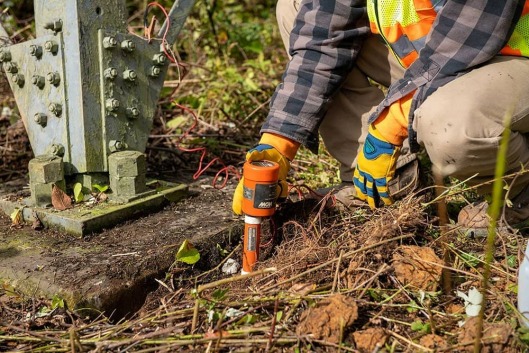Funding a Systematic Approach to Steel Structure Life Extension
How to Use Capital Funding to Build System Resilience, Reduce Risk, and Save Money
Successful Capitalized Programs
Utilities have successfully capitalized multiple types of assessment and remediation programs that extend the life of a structure in a meaningful way, including coating system applications, installation of cathodic protection systems, and steel component and concrete foundation rehabilitation, among others.
Programmatic, circuit-based approaches have also been capitalized which include identification and remediation of additional (above-grade) sub-standard system components identified through an overhead or climbing inspection.
Another method is to implement a consolidated system rehabilitation program covering annual costs for inspection, coatings, restoration, engineering, and replacement. Utilities typically capitalize comprehensive engineering studies that result in building new facilities. Likewise, utilities may also capitalize the engineering studies that are necessary for structure and circuit restoration. Those studies might also include the cost of collecting environmental and structural information gathered during the engineering survey. A utility's overall strategy can include one or more program components depending on system or circuit conditions, specific needs, and historical funding practices for other T&D system rehabilitation programs.
Benefits of Capitalizing Steel Structure Assessment and Remediation
Everyone wins when utilities use a structural reliability and resiliency program to extend the life of a steel transmission structure for 20 or more years, versus replacing it at a cost that can reach into the hundreds of thousands of dollars, or worse, experiencing a catastrophic failure.
Through the effective use of capitalization for system life extension programs, utilities and customers can benefit from:
- The flexibility to fund other T&D maintenance program priorities
- Long-term reduction in Present Value of Revenue Requirements (PVRR) which is a measure of long-term savings to the ratepayer
Conversely, ineffective capitalization can drive sub-optimal asset management decisions. Suboptimal inspect-only programs that focus only on the overhead structure and associated components may increase volatility in future replacement CapEx requirements. More efficient programs include assessment of the structure in the transitional and below grade zones where corrosion is actively taking place. Ineffective capitalization also reduces flexibility in capital rationing and asset investment planning.
Effective capitalization of structure assessment and restoration provides an alternative way to take advantage of current favorable regulation and market conditions, instead of a large-scale asset replacement program. Proactive strategies, which delay otherwise-required replacements, diversify capital investments in transmission, and help keep overall spend at a sustainable level.
.png?width=243&name=Osmose-logo-(white).png)